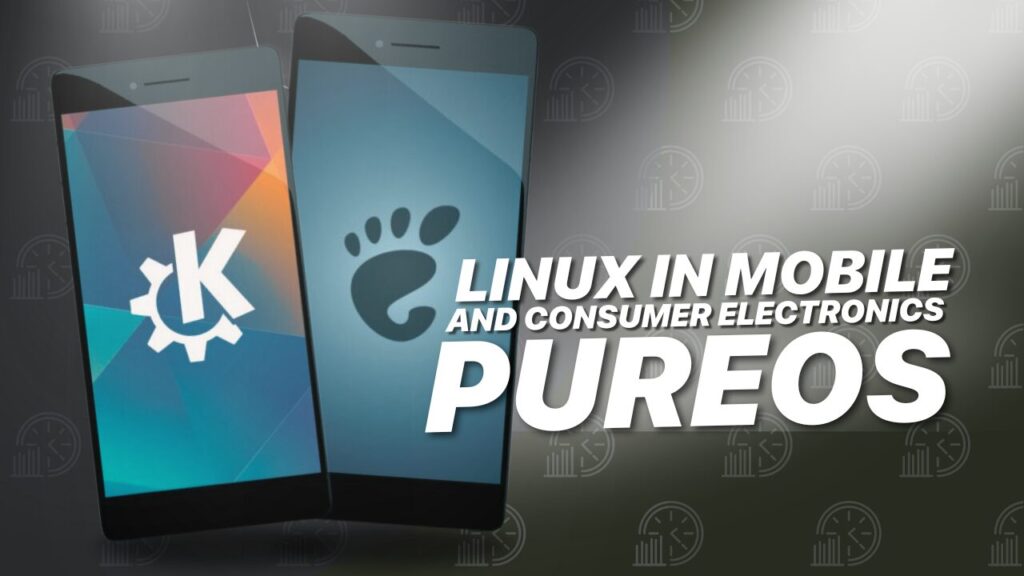The Evolution and Impact of Linux
In the vast world of technology, Linux stands tall as a remarkable and influential creation. It has left an indelible mark on the digital landscape. This article is your guide to understanding the journey of Linux, from its humble beginnings to its current widespread use. Let’s embark on a voyage to explore the history and impact of this open-source operating system. We will uncover the story behind Linux’s inception, its evolution, and its profound role in the modern tech world.
Preview of the Article
In the pages that follow, we will explore the birth of Linux, led by the visionary Linus Torvalds. We will witness how Linux grew and evolved, becoming the powerhouse it is today, with numerous distributions catering to diverse needs. Discover Linux’s dominance in servers and its significant presence in mobile devices and consumer electronics.
We will also explore the technical aspects of Linux, from the core kernel to user-friendly interfaces, comparing it with other operating systems like Windows and macOS. Furthermore, we will uncover the power of Linux’s command line, focusing on the history command, a valuable tool for efficient terminal operations. Lastly, we will gaze into the future, examining the ongoing developments and innovations that promise to keep Linux at the forefront of technology.
The Birth of Linux
In 1991, Linus Torvalds, a student, initiated the creation of Linux, an operating system inspired by UNIX. This marked the beginning of a revolutionary, community-driven tech journey.
Linus Torvalds’ Vision

- The Beginning: In 1991, a young student named Linus Torvalds at the University of Helsinki had a big idea. He wanted to create a new operating system. His goal was simple but ambitious: to make something that was free and open for anyone to use and change.
- Inspiration from UNIX: Linus was inspired by UNIX, a powerful operating system used by professionals. But UNIX was not free, and Linus wanted to make something that everyone could access and improve upon.
- The Name ‘Linux’: The name ‘Linux’ comes from a mix of Linus’s name and UNIX. It reflects the personal touch and the technical inspiration behind the project.
The Release of Linux 0.01
- First Steps: In September 1991, Linus released the first version of Linux, called Linux 0.01. It was very basic and mostly attracted computer enthusiasts and programmers.
- Open-Source Licensing: One of the most important decisions Linus made was to release Linux under the GNU General Public License. This meant anyone could use, change, and share Linux freely. It was a game-changer in the world of software.
The Impact of Linux’s Birth:
- Community Building: The release of Linux sparked interest in a growing community of tech enthusiasts. They saw the potential in Linux and started contributing to its development.
- Foundation for the Future: Linux 0.01 laid the groundwork for what would become a global phenomenon. It was more than just software; it was the start of a movement.
The Growth and Evolution of Linux
Linux, born from the fervor of open-source enthusiasts, swiftly gained momentum in the tech world. Let’s explore the journey of Linux as it grew and evolved into the influential force we know today.
Early Adoption and Community Growth
In the early days, Linux found a dedicated following among tech enthusiasts and developers. They saw the potential of an open-source operating system and rallied around its development. The collaborative nature of the Linux community played a pivotal role in its rapid expansion. Developers from around the world joined forces to enhance and refine Linux, contributing their expertise to this collective endeavor.
Diversification into Distributions
One key factor in Linux’s widespread adoption was its diversification into various distributions, or “distros.” These distributions took the Linux kernel and paired it with different software packages and configurations to cater to a wide array of user needs. Some of the most popular distributions, such as Ubuntu, Fedora, and Debian, emerged during this period. Each distribution brought its own unique features and user experiences, making Linux accessible to a broader audience.
| Distribution | Year Released | Key Features |
|---|---|---|
| Ubuntu | 2004 | User-friendly, extensive app compatibility |
| Fedora | 2003 | Security-focused, customization options |
| Debian | 1993 | Developer-friendly, stability |
Bullet List: Contributions to Linux’s Growth
- Collaboration among developers worldwide.
- A diverse range of Linux distributions catering to specific needs.
- Growing popularity among tech enthusiasts.
Linux’s growth was not limited to a single niche; it expanded its influence across different sectors of the tech industry. In the next section, we will explore Linux’s dominance on servers and supercomputers, highlighting the factors that led to its preference in enterprise environments.
Linux in the Modern Tech Landscape
Linux’s journey from a grassroots project to a tech giant has been nothing short of extraordinary. In this section, we’ll explore how Linux has become an integral part of the modern tech landscape, serving diverse purposes across various domains.
Dominance in Servers and Supercomputers
One of Linux’s most prominent roles is in the realm of servers and supercomputers. Many of the world’s most critical systems, including web servers, data centers, and cloud infrastructure, rely on Linux to power their operations. The reasons behind this dominance are its stability, security, and cost-effectiveness. Linux has proven to be a reliable choice for businesses and organizations seeking robust server solutions.
Bullet List: Linux’s Impact in the Modern Tech Landscape
- Linux powers a significant portion of web servers and data centers.
- It is the preferred choice for cloud infrastructure.
- Linux offers cost-effective and secure server solutions.
Linux in Mobile and Consumer Electronics

Linux’s influence extends beyond servers into the palm of our hands. The Android operating system, based on the Linux kernel, dominates the mobile market. From smartphones to tablets and smart TVs, Linux is the force behind many consumer electronic devices. Its open-source nature has allowed manufacturers to adapt it to a wide range of hardware, making it a versatile choice for the tech industry.
Technical Aspects and User Experience
In this part, we will explore the technical underpinnings of Linux and its user experience. From the core of the operating system to user-friendly interfaces, we’ll uncover what makes Linux a unique choice in the world of operating systems.
The Linux Kernel Explained
At the heart of Linux lies its kernel, the core component responsible for managing hardware resources and providing essential services to the operating system. The Linux kernel is known for its stability, efficiency, and ability to run on a wide range of hardware platforms. This versatility makes it a preferred choice for developers and system administrators.
Bullet List: Key Features of the Linux Kernel
- Open-source nature allows customization and modification.
- Extensive hardware compatibility.
- Efficient resource management for optimized performance.
User-Friendly Linux: From Command Line to GUI
Linux has come a long way in terms of user friendliness. While it has a reputation for command-line prowess, modern Linux distributions offer user-friendly graphical interfaces (GUIs) that rival those of other operating systems. From the visually appealing Ubuntu to the robust Linux Mint, users have a plethora of choices. This combination of power and user-friendliness caters to both technical enthusiasts and those new to Linux.
Linux vs. Other Operating Systems
In this part, we’ll compare Linux with other well-known operating systems like Windows and macOS. We’ll examine key differences in terms of open-source nature, customization, and security, providing insights into why Linux has become a preferred choice for many.
Comparing Linux with Windows and macOS
Linux:
- Open Source: Linux is open source, which means its source code is freely available for modification and distribution.
- Customization: Linux offers a high degree of customization, allowing users to tailor their experience to their needs.
- Security: Linux is known for its strong security features, with frequent updates and a robust user permission system.

Windows:
- Open Source: Windows is not open source, and its source code is proprietary.
- Customization: Customization options in Windows are more limited compared to Linux.
- Security: Windows is vulnerable to various types of malware and attacks, often requiring additional security software.

macOS:
- Open Source: macOS is not open source; it is a proprietary operating system developed by Apple.
- Customization: macOS offers limited customization options compared to Linux.
- Security: macOS is generally considered secure, but it can still be susceptible to security vulnerabilities.

The Power of the Command Line: History Command
In this part, we’ll explore one of Linux’s most valuable tools—the history command. While it might not have the graphical allure of modern interfaces, the command line remains a potent resource for those who seek efficiency and precision in their computing tasks.
Mastering Terminal Commands
The history command in Linux is akin to having a digital memory of your terminal sessions. It meticulously records all the commands you’ve entered during your session, creating a log that can be revisited. This feature is particularly useful for those who spend substantial time in the terminal.

Tips and Tricks for Efficient Command Line Usage
The history command offers more than just a list of past commands; it provides shortcuts for rerunning and modifying previous commands. For instance, you can use the exclamation mark (!) followed by a command number to rerun a specific command from your history. This saves time and reduces the need for retyping complex commands.
Bullet List: Handy History Command Shortcuts
- Rerun a Specific Command: Use ! followed by the command number (e.g., !3).
- Search Command History: Employ history | grep [search term] to find specific commands.
- Recall Last Command: Simply type !! to rerun the last command you entered.
The Future of Linux
As we journey through the evolution of Linux, it’s essential to consider what lies ahead for this influential operating system. In this section, we’ll explore the ongoing developments and innovations that promise to keep Linux at the forefront of technology.
Ongoing Developments and Innovations
Linux is an ever-evolving entity, with a vibrant community of developers and enthusiasts continually working to enhance its capabilities. Some of the ongoing developments and innovations in the Linux world include:
- Kernel Advancements: The Linux kernel continues to receive updates and improvements, enhancing its support for new hardware and optimizing performance.
- Containerization and Virtualization: Linux plays a crucial role in containerization technologies like Docker and Kubernetes, which are revolutionizing application deployment and management.
- Machine Learning and AI: Linux is the preferred platform for machine learning and artificial intelligence development, with various libraries and frameworks designed to run seamlessly on Linux systems.
- Security Enhancements: With the increasing focus on cybersecurity, Linux remains committed to strengthening its security features and protecting users from evolving threats.
- IoT and Embedded Systems: Linux’s adaptability makes it a top choice for Internet of Things (IoT) devices and embedded systems, where it powers everything from smart home gadgets to industrial machinery.
Conclusion
Linux’s journey, from its inception to its current widespread adoption, showcases its innovation and adaptability. As an open-source powerhouse, it thrives on servers, supercomputers, mobile devices, and consumer electronics. Command-line efficiency, epitomized by the history command, empowers users. Ongoing developments in kernel advancements, containerization, machine learning, and security ensure Linux’s continued relevance. Embrace the Linux journey, explore its rich history, and harness its potential. Linux’s commitment to customization, security, and innovation guarantees its place at the forefront of technology, shaping the digital world’s future.


Leave a Reply